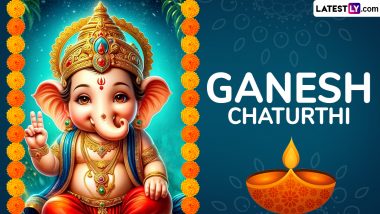Ganesh Chaturthi is one of the most widely celebrated festivals in India, dedicated to Lord Ganesha, who is believed to be the remover of obstacles and the god of wisdom and prosperity. Also known as Ganeshotsav or Ganesh Utsav, the vibrant festival is celebrated with great fervour and devotion that has characterised it for centuries. Ganesh Chaturthi 2024 falls on Saturday, September 7. The Ganeshotsav is a ten-day festival widely celebrated in Maharashtra. Ganeshotsav 2024 will start on September 7 and continue until September 17, which is Anant Chaturdashi, the day when Ganesh Visarjan takes place. As we prepare for the auspicious festival, this article will highlight the origins of Ganesh Utsav, its significance, rituals, mythological legend and the traditions associated with it.
Ganeshotsav Origins
The origins of Ganeshotsav can be dated back to ancient times during the reign of Maratha ruler Chhatrapati Shivaji Maharaj, around 1630-1680. He promoted the festival as a public celebration to nurture unity and nationalism. Moreover, the Peshwa in the 18th century were devotees of Lord Ganesha, and the festival of the deity in Pune started during the month of Bhadrapada. Bhausaheb Laxman Javale, in the year 1892, installed the first sarvajanik (public) idol of Lord Ganesha in Pune. However, the ten-day Utsav (festivities) that are widely celebrated in Maharashtra was revived and popularised by freedom fighter Lokmanya Bal Gangadhar Tilak in 1893. He made Ganeshotsav a grand public festival from a private family event, using it as a platform to unite people to fight for India’s independence from British rule.
Ganeshotsav Significance
Ganeshotsav begins on the fourth day (Chaturthi) of the month of Bhadrapada and continues for ten days, especially in Maharashtra. Moreover, Ganesh Chaturthi is a one-day festival falling on the fourth day of Bhadrapada month, celebrated across the nation. Ganeshotsav 2024 falls on September 7 and will conclude on September 17. During the ten days of Ganesh Utsav, the idols of Lord Ganesha are installed in homes, temples, and public pandals. These idols are made of clay and are worshipped with great devotion. On the tenth day, the Visarjan or immersion of Lord Ganesha idols in the rivers, takes place.
Ganesh Chaturthi Significance
Being a part of Ganeshotsav, Ganesh Chaturthi is a one or one-and-a-half-day festival celebrated across the nation that marks the birth of the elephant-headed deity Ganesha. The puja and celebrations start as per the shubh tithi at home, temples or pandals. Homes and pandals are decorated, and several cultural celebrations, such as dance, music, bhajans, and others, take place. As the tithi ends, Lord Ganesh is immersed in the river or any other water body.
Ganesh Chaturthi Traditions and Rituals
Ganesh Chaturthi rituals are steeped in symbolism and tradition. The festival begins with Pranapratishtha, a ritual to invoke life into the Ganesha idol, followed by the Shodashopachara, a set of sixteen forms of homage. Devotees offer a variety of sweets, flowers, and other offerings to the deity, with the most popular being modaks, Ganesha’s favourite. On the final day of the festival, known as Anant Chaturdashi, the idols are taken in grand processions to nearby rivers, lakes, or the sea for immersion, known as Visarjan.
Ganesh Chaturthi, or Ganeshotsav, embodies cultural heritage and spiritual celebration in India. It is a time of joy and devotion when people come together to celebrate the birth of Lord Ganesha. As we prepare to welcome Ganesha into our homes and hearts in 2024, let us also learn about the festival’s deeper significance and values.
(The above story first appeared on LatestLY on Aug 29, 2024 06:21 PM IST. For more news and updates on politics, world, sports, entertainment and lifestyle, log on to our website latestly.com).













 Quickly
Quickly




















